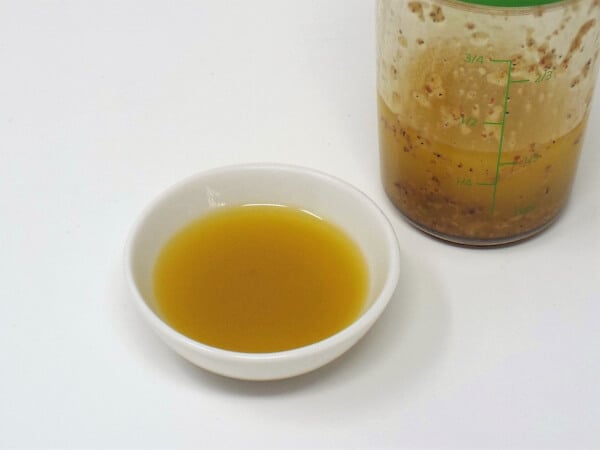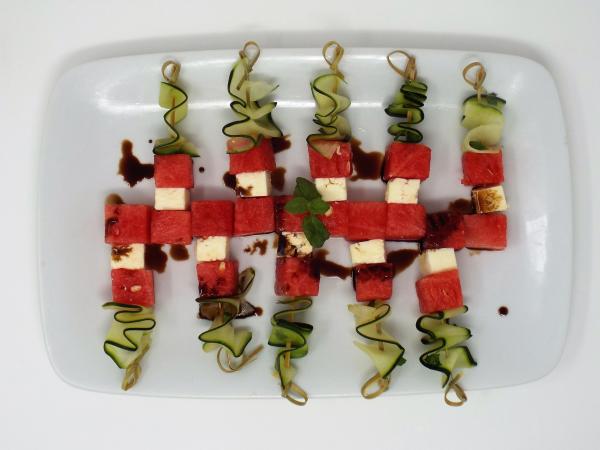Balsamic vs. White Balsamic: How They're Made and How They Differ
When it comes to indulging our taste buds, few things can compare to the rich and aromatic flavors of balsamic vinegar. However, many people are often left wondering about the differences between traditional balsamic vinegar and its lesser-known counterpart, white balsamic vinegar.

Photo by Dima Solomin on Unsplash
Traditional Balsamic Vinegar: Unveiling the Meticulous Process
Balsamic vinegar, with its luscious and complex flavor, has been a cherished culinary treasure for centuries. Originating from the Modena and Reggio Emilia regions of Italy, this exquisite condiment is highly regarded for its versatility and ability to elevate a wide range of dishes. Behind its extraordinary taste lies a meticulous and time-intensive production process that has been perfected over generations.Selecting the Grapes:
The foundation of balsamic vinegar production lies in the careful selection of grapes. Typically, two varieties are used: Trebbiano and Lambrusco grapes. The quality of these grapes impacts the overall taste profile of the vinegar. Harvested at their peak ripeness, the grapes are then crushed to extract their juice.
Simmering the Must:
The extracted grape juice, also known as "must," undergoes a cooking process in large open vats. The must is slowly simmered over low heat for hours, gradually reducing its volume through evaporation. This slow cooking process helps concentrate the flavors and natural sugars present in the grapes.
Fermentation and Aging:
After simmering, the cooked must is left to cool naturally before being transferred to wooden barrels called "batterias." These barrels are often made from different types of wood, including oak, cherry, chestnut, mulberry, or juniper. Each wood imparts distinct characteristics to the vinegar as it ages.
In the first barrel of the batteria (sets of barrels), called "il travaso," a small amount of aged vinegar from a previous batch is added to start the fermentation process. This "mother" vinegar contains acetic acid bacteria that convert alcohol into acetic acid – a crucial step in vinegar production. Over time, the vinegar undergoes a slow and gradual transformation, developing its signature flavors and complexity.
Aging in Successive Barrels:
The aging process of balsamic vinegar is a labor of patience and expertise. The vinegar is transferred through a series of progressively smaller barrels, each made from different woods, known as "ricarichi." These barrels contribute to the vinegar's flavor profile as it absorbs the unique characteristics of each wood.
During this aging journey, the vinegar is exposed to varying temperatures and humidity levels, which further enhance its flavor profile. The barrels are typically made from a combination of oak, cherry, chestnut, mulberry, and juniper woods. Each wood imparts its own distinct aroma and taste to the vinegar as it ages. The amount of time spent in each barrel can vary depending on the desired flavor profile. As the vinegar moves from one barrel to another, it gradually becomes thicker and more concentrated. This slow aging process allows the flavors to develop and intensify over time.
Additionally, during this aging process, a portion of the vinegar evaporates naturally through small openings in the barrels known as "angels' share." This evaporation further concentrates the flavors and richness of the vinegar.
The entire aging process can take anywhere from a few years to several decades. The longer balsamic vinegar is aged, the more complex and nuanced its flavors become. Aged balsamic vinegars are often prized for their deep caramelized sweetness with hints of fruity undertones.
It's important to note that traditional balsamic vinegar is regulated by specific Italian consortiums that ensure authenticity and quality standards are met. These regulations dictate factors such as minimum aging times and production methods to maintain consistent quality across different producers.
How White Balsamic Differs from Traditional Balsamic
Ingredient Composition:Traditional balsamic vinegar is made from unfermented grape juice known as "must," which is obtained by pressing whole grapes. The must is then cooked down and aged for several years in wooden barrels, resulting in a complex and intense flavor profile. White balsamic vinegar, on the other hand, is made from a blend of white wine vinegar and grape must. This difference in ingredients contributes to variations in taste, color, and consistency.
Flavor Profile:
Balsamic vinegar is renowned for its sweet and tangy taste with underlying notes of caramel and fruitiness. It has a rich, syrupy texture that coats the palate, making it a versatile ingredient for both savory and sweet dishes. White balsamic vinegar, on the contrary, has a milder flavor profile with less sweetness and acidity than its traditional counterpart. It offers a more delicate taste that complements lighter dishes without overpowering them.
Color:
One noticeable difference between balsamic and white balsamic vinegars lies in their coloration. Traditional balsamic vinegar has a deep brown hue, often described as resembling molasses or dark caramel. On the other hand, white balsamic vinegar is much lighter in color, ranging from pale golden to light amber. This variation in color can be attributed to the different aging processes used for each type of vinegar.
Culinary Uses:
Balsamic vinegar is a staple in Italian cuisine and is widely used in dressings, marinades, glazes, and reductions. Its robust flavor pairs exceptionally well with roasted meats, grilled vegetables, salads, and even desserts like strawberries and ice cream. White balsamic vinegar, with its subtle taste, is often preferred for dishes where a milder vinegar flavor is desired. It works wonderfully in light dressings, seafood dishes, fruit salads, and even cocktails.
Shelf Life:
Due to the aging process involved in its production, traditional balsamic vinegar has a longer shelf life compared to white balsamic vinegar. Traditional balsamic vinegar can be kept for several years, even decades, if stored properly in a cool and dark place. Its complex flavors continue to develop and mature over time, making it a prized ingredient in gourmet cooking. On the other hand, white balsamic vinegar has a shorter shelf life of around 2-3 years. It is best consumed within this time frame to ensure optimal taste and quality. To extend the shelf life of both types of vinegars, it is advisable to keep them tightly sealed and away from heat and sunlight.



















